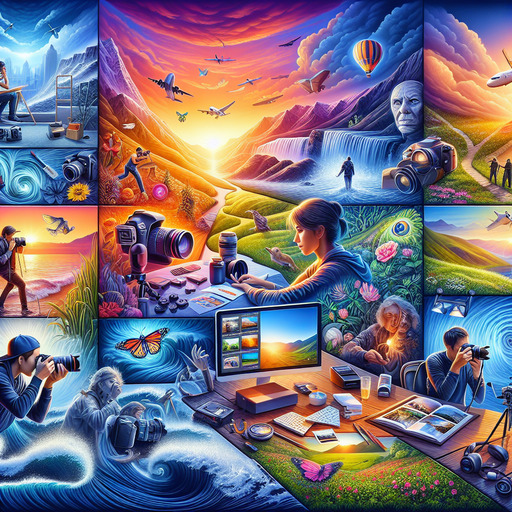
-
Table of Contents
- Mastering Photography: Tips and Techniques for Stunning Shots
- Understanding the Basics of Photography
- Why Mastering the Basics Matters
- Advanced Photography Techniques
- Portrait Photography: Capturing Emotions
- Landscape Photography: Embracing Nature’s Beauty
- Essential Photography Gear
- Investing in the Right Equipment
- Editing and Post-Processing
- Enhancing Your Images
- Conclusion
- Questions and Answers
Mastering Photography: Tips and Techniques for Stunning Shots
Photography is more than just capturing moments; it’s about telling stories through images. Whether you’re a budding photographer or a seasoned professional, understanding the nuances of photography can elevate your work to new heights. In this guide, we’ll explore essential photography tips, techniques, and insights to help you capture breathtaking images.
Understanding the Basics of Photography
Why Mastering the Basics Matters
Before diving into advanced techniques, it’s crucial to have a solid grasp of the fundamentals. Mastering the basics ensures that you have a strong foundation to build upon, allowing for more creative freedom.
- Exposure: Learn the relationship between aperture, shutter speed, and ISO to control the light in your images.
- Composition: Use the rule of thirds, leading lines, and framing to create visually appealing photos.
- Focus: Understand how to use depth of field to highlight your subject and create a sense of depth.
Advanced Photography Techniques
Portrait Photography: Capturing Emotions
Portrait photography is about capturing the essence of a person. To excel in this genre, focus on lighting, posing, and expression.
- Lighting: Use natural light or softbox lighting to create flattering portraits.
- Posing: Guide your subject into natural poses that reflect their personality.
- Expression: Engage with your subject to capture genuine emotions.
Landscape Photography: Embracing Nature’s Beauty
Landscape photography requires patience and an eye for detail. It’s about capturing the grandeur of nature in a single frame.
- Timing: Shoot during the golden hour for soft, warm lighting.
- Perspective: Experiment with different angles to add depth and interest.
- Editing: Use editing software to enhance colors and contrast without overdoing it.
Essential Photography Gear
Investing in the Right Equipment
Having the right gear can make a significant difference in your photography. While it’s not all about the equipment, certain tools can enhance your capabilities.
- Cameras: Choose between DSLRs, mirrorless cameras, or even high-quality smartphones based on your needs.
- Lenses: Invest in versatile lenses like a 50mm prime or a wide-angle lens for different scenarios.
- Accessories: Tripods, filters, and external flashes can add stability and creativity to your shots.
Editing and Post-Processing
Enhancing Your Images
Editing is an integral part of photography that allows you to refine your images and bring your vision to life.
- Software: Use tools like Adobe Lightroom or Photoshop for comprehensive editing capabilities.
- Techniques: Adjust exposure, contrast, and saturation to enhance your photos.
- Consistency: Develop a consistent editing style to create a cohesive portfolio.
Conclusion
Photography is a journey of continuous learning and exploration. By mastering the basics, experimenting with advanced techniques, and investing in the right gear, you can capture stunning images that tell compelling stories. Remember, the best way to improve is to keep practicing and pushing your creative boundaries.
For more insights into photography, check out this Wikipedia page on Photography.
Questions and Answers
Q1: What is the best time of day for landscape photography?
A1: The golden hour, which occurs shortly after sunrise and before sunset, is ideal for landscape photography due to its soft, warm lighting.
Q2: How can I improve my portrait photography skills?
A2: Focus on lighting, posing, and engaging with your subject to capture genuine emotions. Practice regularly and experiment with different techniques.
Q3: What editing software is recommended for beginners?
A3: Adobe Lightroom is user-friendly and offers powerful editing tools suitable for beginners and professionals alike.
If you’re interested in learning more about photography or our services, please reach out to us via our contact page.